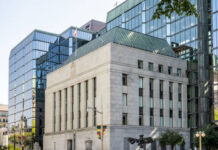Market movers today
Riksbanken will publish its monetary policy decision following the April meeting. We look for an unchanged rate path and an end to the QE programme. Although not a high conviction call this could see EUR/SEK move towards 10.35 (see more on page 2).
Also today the Turkish central bank (TCMB) will have its monetary policy meeting and make a decision on policy rates. In line with Bloomberg consensus, we expect the one-week repo rate to remain unchanged at 24.00 as inflation deceleration has stopped and the rising oil price risk is seen as a negative factor for both the Turkish economy and the current account balance.
In Norway Q2 manufacturing confidence is released today (see more on page 2).
In Sweden, apart from the Riksbank, we also get NIER’s economic tendency survey (see more on page 2).
Selected market news
Following weaker than expected Australian Q1 CPIs, and a disappointing German Ifo survey, which saw bunds rally 5bp and EURUSD at close to 2y lows, the sights were set on the Bank of Canada’s rate decision late in the European session. The market interpreted the BoC’s decision as dovish as it firmed its ‘on-hold’ stance (policy rate unchanged at 1.75%) and markets are now pricing in a 50% probability of rate cuts over the coming 6M, despite the monetary policy report containing several upbeat elements on growth, inflation and capital utilisation. In our view, we would have to see a significant negative global growth shock or a Fed funds target cut for the BoC to cut rates, and thus the market reaction seems overdone. The USDCAD strengthened towards the 1.35 mark, but we still see a stronger CAD going forward on relative rates and higher oil. The decision and preceding events laid the foundation for a rally in US treasuries which saw 10y yields down 5bp.
Staying in the focus of central banks the BoJ kept its QQE with yield curve control unchanged at a meeting ending this morning. It tweaked the forward guidance somewhat though, now saying they “will keep very low-interest rates levels for an extended period of time at least through to around spring 2020”. Until now there was now specific time frame for how long rates would be kept at low levels. The BoJ cut its GDP forecast for FY2018 ending in March from 0.9% to 0.6%, which is no surprise considering what looks like a weak Q1. In addition, FY2019 and 2020 GDP and inflation forecasts have been cut slightly. Particularly interesting is the new inflation outlook, which now includes FY2021. BoJ expects CPI inflation to hit 1.6% by then (lowest t+2 inflation forecast since 2013). That is, the BoJ does not expect to meet its inflation mandate within a two to three-year horizon.
Oil could not sustain its recent gains as American crude inventories saw a surprisingly big jump of 5.48 million barrels according the EIA. Also yesterday, according to Bloomberg, US government officials stated that Trump backed the recent attack on Tripoli by the Libyan opposition led by strongman Khalifa Haftar. This could potentially be a long term blow to Libya’s growing and stabilising oil exports.












